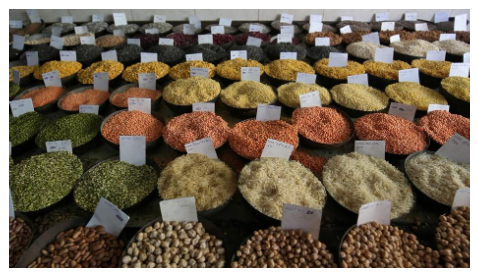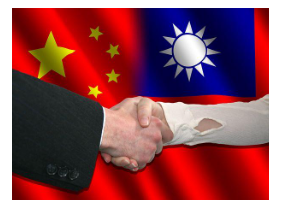Wednesday, 17th January 2024
Bru Refugees and Their Rehabilitation
In News: Land has been earmarked by the Tripura government for the resettlement of the final group of Mizoram Bru refugees.
Bru Refugees and the Bru-Reang Refugee Crisis
- Bru Community Background
- The Brus, also known as Reangs, are an indigenous tribal community in northeast India.
- Historically, they inhabited regions in Mizoram, Tripura, and Assam.
- Tribal Designation in Tripura
- In Tripura, the Brus are recognized as a Particularly Vulnerable Tribal Group (PVTG).
- Religious Shift
- While many Brus in Assam and Tripura follow Hinduism, those in Mizoram have predominantly embraced Christianity.
Bru-Reang Refugee Crisis
- Internal Displacement (1997)
- Brus in Tripura faced over two decades of displacement due to ethnic persecution, primarily from Mizoram.
- Originating in 1995, the demand to remove Brus from Mizoram's electoral rolls intensified tensions.
- Ethnic Clashes and Migration
- Brus, distinct from Mizos, faced opposition, leading to clashes.
- The Bru National Liberation Front and Bru National Union were formed, demanding a separate Bru Autonomous District Council (ADC).
- Ethnic clashes forced around 35,000 Brus to seek refuge in Tripura in 1997.
Attempts to Resettle the Brus
- Early Resettlement Attempts
- State and union governments made efforts to repatriate Brus to Mizoram.
- Until 2014, only around 5,000 individuals or 1622 Bru-Reang families returned in different batches.
- Quadripartite Pact of 2018
- In 2018, a pact was signed involving Tripura, Mizoram, and the central government, aiming to resettle refugees in Mizoram.
- Opposition from Mizo groups and Reangs, fearing threats, hindered the implementation.
- 2020 Resettlement Agreement
- Another quadripartite pact in 2020 proposed resettling Brus in Tripura.
- The central government allocated a Rs 661 crore package for rehabilitation.
- Promised benefits included residential plots, fixed deposits, grants for house construction, and financial support for two years.
- The agreement also pledged to include displaced Reangs in Tripura's electoral rolls.
Understanding Autonomous District Council (ADC)
- An Autonomous District Council (ADC) is an administrative division in India with the authority to levy taxes and fees.
- The Indian Constitution's Sixth Schedule outlines 10 ADCs across Assam, Tripura, Meghalaya, and Mizoram.
Reang Identity
- Reang is a Bru clan in the Northeast Indian state, primarily found in Tripura.
- They also have a presence in Assam and Mizoram, speaking the Kaubru language.
Source: TH
Bru Refugees and Their Rehabilitation
In News: Land has been earmarked by the Tripura government for the resettlement of the final group of Mizoram Bru refugees.
Bru Refugees and the Bru-Reang Refugee Crisis
- Bru Community Background
- The Brus, also known as Reangs, are an indigenous tribal community in northeast India.
- Historically, they inhabited regions in Mizoram, Tripura, and Assam.
- Tribal Designation in Tripura
- In Tripura, the Brus are recognized as a Particularly Vulnerable Tribal Group (PVTG).
- Religious Shift
- While many Brus in Assam and Tripura follow Hinduism, those in Mizoram have predominantly embraced Christianity.
Bru-Reang Refugee Crisis
- Internal Displacement (1997)
- Brus in Tripura faced over two decades of displacement due to ethnic persecution, primarily from Mizoram.
- Originating in 1995, the demand to remove Brus from Mizoram's electoral rolls intensified tensions.
- Ethnic Clashes and Migration
- Brus, distinct from Mizos, faced opposition, leading to clashes.
- The Bru National Liberation Front and Bru National Union were formed, demanding a separate Bru Autonomous District Council (ADC).
- Ethnic clashes forced around 35,000 Brus to seek refuge in Tripura in 1997.
Attempts to Resettle the Brus
- Early Resettlement Attempts
- State and union governments made efforts to repatriate Brus to Mizoram.
- Until 2014, only around 5,000 individuals or 1622 Bru-Reang families returned in different batches.
- Quadripartite Pact of 2018
- In 2018, a pact was signed involving Tripura, Mizoram, and the central government, aiming to resettle refugees in Mizoram.
- Opposition from Mizo groups and Reangs, fearing threats, hindered the implementation.
- 2020 Resettlement Agreement
- Another quadripartite pact in 2020 proposed resettling Brus in Tripura.
- The central government allocated a Rs 661 crore package for rehabilitation.
- Promised benefits included residential plots, fixed deposits, grants for house construction, and financial support for two years.
- The agreement also pledged to include displaced Reangs in Tripura's electoral rolls.
Understanding Autonomous District Council (ADC)
- An Autonomous District Council (ADC) is an administrative division in India with the authority to levy taxes and fees.
- The Indian Constitution's Sixth Schedule outlines 10 ADCs across Assam, Tripura, Meghalaya, and Mizoram.
Reang Identity
- Reang is a Bru clan in the Northeast Indian state, primarily found in Tripura.
- They also have a presence in Assam and Mizoram, speaking the Kaubru language.
Source: TH
India-Nepal Power Pact
In News: During the 7th meeting of the Nepal-India Joint Commission, India and Nepal formalized a long-term agreement for the export of power, emphasizing the deepening relations between the two countries.
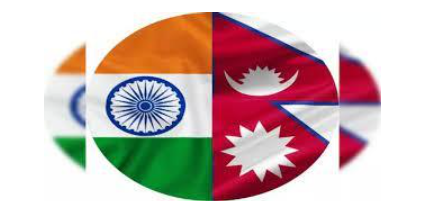
Key Takeaways from the 7th Meeting of the Nepal-India Joint Commission
- Power Export Agreement
- A bilateral agreement between India and Nepal for the export of 10,000 MW of power in the next decade was signed.
- Inauguration of Cross-Border Transmission Lines
- Joint inauguration of three cross-border transmission lines, including the 132 kV Raxaul-Parwanipur, 132 kV Kushaha-Kataiya, and New Nautanwa-Mainahiya lines.
- Renewable Energy Cooperation
- A Memorandum of Understanding (MoU) was signed between Nepal Electricity Authority and India's National Thermal Power Corporation Limited for collaboration in renewable energy.
- Satellite Service Agreement
- The Service Agreement for Munal Satellite, developed by Nepal Academy of Science and Technology in collaboration with NewSpace India Limited, was launched.
Major Areas of Cooperation Between India and Nepal
- Economic Cooperation
- India is Nepal's largest trade partner and source of foreign investments, facilitating transit for a significant portion of Nepal's third-country trade.
- Defense Cooperation
- India supports Nepal Army's modernization through equipment supply and training, with joint military exercises like 'Surya Kiran.'
- Cultural Cooperation
- The inaugural India-Nepal Cultural Festival in Lumbini showcased the rich cultural heritage and traditions of both countries, emphasizing Buddhism.
- Water Sharing
- Agreements such as the Koshi Agreement and Gandak Agreement highlight cooperation in the water resources sector.
- Connectivity
- India is actively assisting Nepal in upgrading roads, establishing cross-border rail links, and setting up Integrated Check Posts.
- Electricity Export
- In 2021, India exported around 2200 MUs of electricity to Nepal.
Major Challenges to India-Nepal Relations
- Boundary Dispute
- Tensions persist over the Kalapani-Limpiyadhura-Lipulekh trijunction area and the Susta region, contributing to a significant challenge.
- China's Influence
- China's increasing involvement in Nepal's development can potentially impact its role as a buffer state between India and China.
- Gorkhas and PLA Concerns
- Concerns arise over Gorkhas, traditionally in the Indian Army, potentially joining China's PLA due to apprehensions related to India's Agniveer scheme.
Way Forward
- Addressing Immediate Concerns
- Prioritize resolving immediate concerns tied to the Agniveer Scheme to build trust and goodwill.
- Joint Development Projects
- Collaborate on joint projects for the development of border regions to foster a sense of shared development.
- Diplomatic Dialogue
- Engage in sustained and open diplomatic discussions to address the boundary dispute and other contentious issues.
- Track-II Diplomacy
- Encourage Track-II diplomacy involving non-governmental entities, academics, and civil society to reshape India-Nepal cooperation.
|
UPSC Previous Year Questions Prelims (2016) Q. Consider the following pairs: Community sometimes in the affairs of mentioned in the news
Which of the pairs given above is/are correctly matched? (a) 1 and 2 Ans: (c) |
Source: IE
Multidimensional Poverty Index: NITI Ayog
In News: A recent Discussion Paper by NITI Aayog titled "Multidimensional Poverty in India since 2005-06" reveals that, over the past nine years, 24.82 crore individuals have successfully overcome Multidimensional Poverty.
National Multidimensional Poverty Index (MPI) in India
- Definition of MPI
- The National MPI gauges simultaneous deprivations in Health, Education, and Standard of Living, employing 12 Sustainable Development Goals-aligned indicators.
- Indicators encompass aspects such as Nutrition, Child and Adolescent mortality, Maternal Health, Education-related metrics, and various living standards.
- Methodology
- The MPI methodology, based on the Alkire and Foster (AF) method, identifies poverty using universally recognized metrics designed for assessing acute poverty.
- The National MPI includes 12 indicators, while the global MPI covers 10.
Key Highlights of India's Multidimensional Poverty Index Since 2005-2006
- Overall Decline in Multidimensional Poverty
- A substantial reduction from 29.17% in 2013-14 to 11.28% in 2022-23, indicating a decrease of 17.89% points.
- Approximately 24.82 crore individuals have moved out of multidimensional poverty in the last nine years, credited to government initiatives.
- State-wise Decline
- Uttar Pradesh, Bihar, Madhya Pradesh, and Rajasthan witness the most significant decrease in the number of people classified as MPI poor.
- Uttar Pradesh leads with 5.94 crore individuals escaping multidimensional poverty, followed by Bihar, Madhya Pradesh, and Rajasthan.
- Improvement in All Indicators
- Significant advancements across all 12 MPI indicators, showcasing progress in Health, Education, and Standard of Living dimensions.
- Severity of Deprivation
- A slight decrease in the Severity of Deprivation (SoD) between 2015-16 and 2019-21 compared to the preceding period.
- The SoD measures the deprivations experienced by the average multidimensionally poor person.
- SDG Target Achievement
- India is on track to achieve SDG Target 1.2, aiming to halve the proportion of individuals living in multidimensional poverty well before 2030.
- Notable improvements in standard of living indicators contribute to this achievement.
- Drivers for MPI Decline
- Initiatives like Poshan Abhiyan and Anemia Mukt Bharat improve healthcare access, leading to decreased deprivation.
- Food security programs, such as the Targeted Public Distribution System, covering 81.35 crore beneficiaries, contribute to poverty alleviation.
- Government commitments, exemplified by extending free food grain distribution, contribute to well-being.
- Comprehensive Programs
- Programs addressing maternal health, clean cooking fuel distribution (Ujjwala Yojana), enhanced electricity coverage (Saubhagya), and transformative campaigns (Swachh Bharat Mission, Jal Jeevan Mission) collectively elevate living conditions.
- Flagship programs like Pradhan Mantri Jan Dhan Yojana and PM Awas Yojana play pivotal roles in financial inclusion and providing safe housing for the underprivileged.
|
UPSC Previous Year Questions Prelims (2019) Q. Atal Innovation Mission is set up under the (a) Department of Science and Technology Ans: (c) Prelims (2015) Q. The Government of India has established NITI Aayog to replace the (a) Human Rights Commission Ans: (d) Mains (2018) Q. How are the principles followed by the NITI Aayog different from those followed by erstwhile Planning Commission in India? |
Source: TH
Roadmap for Facilitating Green Hydrogen Adoption in India
In News: A report titled "Green Hydrogen: Enabling Measures Roadmap for Adoption in India" by the World Economic Forum and Bain & Company emphasizes the imperative of reducing the production cost of Green Hydrogen to USD 2 per kg or lower.
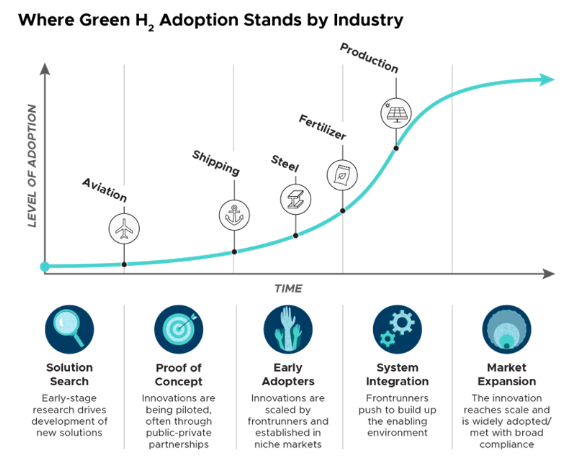
Key Highlights of the Report
- India’s Surging Energy Demand
- India ranks as the world's third-largest economy in energy needs.
- Anticipated 35% growth in energy demand by 2030.
- In 2022, India's energy import bill reached USD 185 billion.
- Critical Role of Green Hydrogen
- Essential for meeting India’s energy security needs and achieving Net Zero by 2070.
- National Green Hydrogen Mission launched in 2022 with approximately USD 2.3 billion in incentives.
- Current Hydrogen Production Status
- India produces 6.5 MMTPA of hydrogen, primarily gray hydrogen.
- Green hydrogen production requires increased renewable energy capacity.
- Challenges and Expectations
- Limited traction for green hydrogen, with significant production expected post-2027.
- Challenges include production cost, infrastructure expenses, and industry readiness.
Blueprint for Green Hydrogen Evolution in India
- Reduce Green Hydrogen Production Costs
- Current cost around USD 4–5/kg; target goal USD 2/kg.
- Strategies include direct subsidies, long-term policy clarity, and indigenous electrolyzer technology development.
- Minimize Conversion, Storage, and Transport Costs
- Infrastructure costs impact overall green hydrogen expenses.
- Short to medium-term development of production clusters and long-term infrastructure investments recommended.
- Support Industries for Green Hydrogen Adoption
- Focus incentives on industries likely to adopt green hydrogen.
- Target existing gray hydrogen users for increased domestic demand.
- Capitalize on Export Potential
- Leverage India's potential as a green hydrogen export hub.
- Improve export infrastructure at ports for green hydrogen derivative processing.
- Disincentivize Carbon-Intensive Sources
- Divert subsidies from high-emission sources.
- Introduce a comprehensive carbon-tax regime to promote a green energy transition.
Understanding Green Hydrogen
- Definition
- Hydrogen crucial for various applications.
- Green hydrogen produced through electrolysis using renewable energy.
- Colors denote hydrogen source (e.g., brown from coal, green from renewables).
- Need for Green Hydrogen
- Clean energy source with nearly zero emissions.
- Applications in fuel cells, fertilizers, and steel manufacturing.
- Global focus on green hydrogen for energy security and emission reduction.
- Other Renewable Energy Initiatives
- Jawaharlal Nehru National Solar Mission (JNNSM)
- International Solar Alliance
- PM-KUSUM
- National Wind-Solar Hybrid Policy
- Rooftop Solar Scheme
|
UPSC Previous Year Questions Prelims (2023) Q. Consider the following heavy industries:
Green hydrogen is expected to play a significant role in decarbonizing how many of the above industries? (a) Only one Ans: C Q. With reference to green hydrogen, consider the following statements:
How many of the above statements are correct? (a) Only one Ans: (c) Prelims (2010) Q. Hydrogen fuel cell vehicles produce one of the following as “exhaust” (a) NH3 Ans: (c) |
Source: DTE
Swachh Survekshan Awards 2023
In News: The Swachh Survekshan Awards 2023 were presented by the President of India at Bharat Mandapam, New Delhi, in an event hosted by the Ministry of Housing and Urban Affairs (MoHUA).
Major Highlights of Swachh Survekshan Awards 2023
- About Swachh Survekshan
- Conducted by MoHUA since 2016, the world's largest urban sanitation and cleanliness survey.
- Fosters healthy competition among cities, promoting cleaner urban spaces.
- The 2023 round covered 4,416 urban local bodies, 61 cantonments, and 88 Ganga towns.
- City Rankings
- Indore retains the cleanest city title for the 7th consecutive year.
- Surat claims the top spot for the first time, sharing the honor with Indore.
- Both cities achieve 100% door-to-door waste collection, 98% source segregation, and 100% dumpsite remediation.
- Navi Mumbai secures the third cleanest city position.
- Evaluation Parameters
- Swachh Survekshan 2023 rankings based on factors like door-to-door waste collection, source segregation, public area cleanliness, water body cleanliness, and citizen feedback on city cleanliness.
- Cleanest State Award
- Maharashtra claims the cleanest state award with 89.24% door-to-door waste collection and 67.76% source segregation.
- Madhya Pradesh secures the second position in state cleanliness rankings.
- Bottom Five States
- Arunachal Pradesh, Mizoram, Rajasthan, Nagaland, and Tripura rank as the bottom five states in cleanliness.
- Other Specialized Awards
- Chandigarh receives Safaimitra Surakshit Shehar award for the city with the best safety standards for sanitation workers.
- Varanasi recognized as the cleanest Ganga town.
- Sasvad in Maharashtra earns the cleanest city title among those with a population below 1 lakh.
- Mhow Cantonment declared the cleanest cantonment in the country.
Source: IE
Vadnagar: Oldest Living City in India
In News: A collaborative study conducted by the Indian Institute of Technology (Kharagpur) and the Archaeological Survey of India (ASI) has identified signs of cultural continuity in Vadnagar, Gujarat, persisting beyond the collapse of the Harappan civilization.
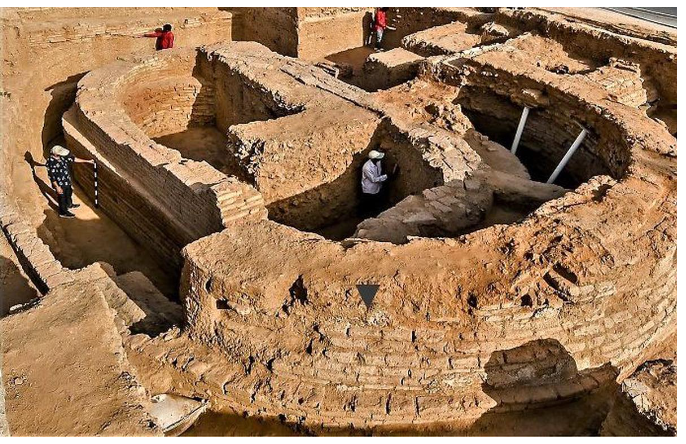
Key Highlights of the Excavation at Vadnagar
- Age of Settlement
- Evidence reveals a human settlement in Vadnagar dating back to around 800 BCE.
- Corresponds to the late-Vedic/pre-Buddhist Mahajanapadas or oligarchic republics period.
- Climate Influence
- Changes in climate, such as variations in rainfall or droughts, are suggested to drive the rise and fall of kingdoms over a 3,000-year period.
- Recurrent invasions by Central Asian warriors are also attributed to climate factors.
- Multicultural Settlement
- Vadnagar is described as a multicultural and multireligious settlement.
- Influences include Buddhism, Hinduism, Jainism, and Islamic traditions.
- Archaeological Artifacts
- Discoveries encompass various artifacts, including pottery, copper, gold, silver, and iron objects.
- Intricately designed bangles and coin molds from the Indo-Greek rule were among the findings.
- Buddhist Monastery
- The excavation identifies one of the oldest Buddhist monasteries in Vadnagar.
- Adds historical and cultural richness to the settlement.
- Archaeological Periods
- Seven cultural stages (periods) uncovered during the excavation, ranging from Mauryan to Gaekwad-British colonial rule.
- Represents a span of historical evolution up to the present day.
- Radiocarbon Dates
- Unpublished radiocarbon dates suggest the settlement's potential age as old as 1400 BCE.
- Challenges the notion of a Dark Age, indicating cultural continuity in India for the last 5500 years.
Source: TH
Harvest Festivals
In News: The Prime Minister of India has extended greetings to people nationwide on the celebration of Harvest Festivals, including Makar Sankranti, Uttarayan, Bhogi, Magh Bihu, and Pongal.
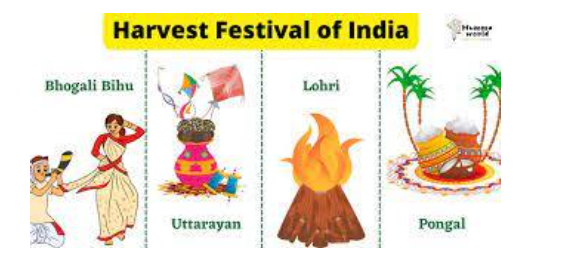
Harvest Festivals in India
- Makar Sankranti
- Denotes the sun's entry into the zodiac sign of Makara (Capricorn).
- Marks the onset of summer and the auspicious Uttarayan period for Hindus.
- Celebrated as Lohri in North India, Sukarat in Central India, Bhogali Bihu in Assam, and Pongal in South India.
- Gujarat hosts the International Kite Festival as part of Uttarayan celebrations.
- Bihu
- Celebrated during the annual harvest in Assam.
- Magh Bihu/Bhogali Bihu marks the Assamese New Year.
- Originated when people in the valley started tilling the land.
- Pongal
- Also known as Thai Pongal, observed in the month of Thai.
- Involves a four-day celebration expressing gratitude for the harvest.
- Tamilians create traditional designs (kolams) in their homes with rice powder.
Rooster Fights
- About
- Rooster fights, locally known as "Kodi Pandalu," involve specially bred birds with sharp leg blades fighting until one is killed or critically injured.
- Laws Related to Rooster Fights
- Banned under the Prevention of Cruelty to Animals (PCA) Act, 1960.
- Prohibits the organization and participation in animal fights.
- Supreme Court rulings emphasize the ban on using animals for entertainment purposes, including rooster fights.
Source: HT
Difference Between an Interim Budget and Vote-On-Account
In News: The Finance Minister is prepared to present her consecutive sixth budget. Given that it is a general elections year, the government will be restricted to presenting either an Interim Budget or a Vote-on-account instead of a comprehensive full Budget.
Interim Budget vs Vote-On-Account: Key Differences
- Purpose and Duration
- Interim Budget
- Framework for managing provisional expenditures over a short duration.
- Covers a few months until a new government takes office.
- Vote-On-Account
- Parliamentary approval for essential expenditures for April to June/July.
- Covers the period until the new government presents a full-fledged budget.
- Interim Budget
- Contents
- Interim Budget
- Includes the current state of the economy, plan and non-plan expenditures, tax rate changes, and estimates for the coming financial year.
- Subject to constraints imposed by the Election Commission to avoid influencing the public during elections.
- Vote-On-Account
-
- Accounts for essential expenditures like salaries, ongoing project funding, and other government expenses.
- Focuses on short-term financial needs of the outgoing government.
-
- Interim Budget
- Parliament Approval
- Interim Budget
- Discussed and passed in the Lok Sabha similar to a regular budget.
- Vote-On-Account
- Passed without formal discussion, addressing immediate financial needs.
- Interim Budget
- Tax Regime Changes
- Interim Budget
- Can propose changes in the tax regime.
- Vote-On-Account
- Cannot alter the existing tax regime under any circumstances.
- Interim Budget
- Validity Period
- Interim Budget
- Valid throughout the year.
- Vote-On-Account
- Valid for a period of two to four months, depending on circumstances.
- Interim Budget
Source: BT
Exercise Ayutthaya
In News: Recently, the inaugural Bilateral Maritime Exercise, named 'Ayutthaya,' took place between the Indian Navy (IN) and the Royal Thai Navy (RTN).
About Exercise Ayutthaya
- Naming and Significance
- The bilateral exercise is named 'Ex-Ayutthaya,' translating to 'The Invincible One' or 'Undefeatable.'
- Symbolizes the historical legacies and rich cultural ties between Ayodhya in India and Ayutthaya in Thailand.
- Participating Naval Ships
- Indigenously built Indian Naval ships Kulish and IN LCU 56 took part in the inaugural edition.
- Strengthening Operational Synergy
- The exercise marks a significant step in strengthening operational synergy between the Indian Navy and Royal Thai Navy.
- Focuses on progressively increasing exercise complexity.
- Activities during the Exercise
- Participating units conducted surface and anti-air exercises, including weapon firing, seamanship evolutions, and tactical maneuvers.
- The Sea Phase of the exercise included Maritime Patrol Aircraft from both navies.
- Coordinated Patrol
- The 36th edition of India-Thailand Coordinated Patrol (Indo-Thai CORPAT) was conducted concurrently with the maiden bilateral exercise.
- Regional Maritime Security
- Aligns with the Government of India's vision of SAGAR (Security And Growth for All in the Region).
- Highlights the Indian Navy's proactive engagement with countries in the Indian Ocean Region for enhancing regional maritime security.
- Close Relationship
- The Indian Navy and Royal Thai Navy maintain a close and friendly relationship that has strengthened over the years.
Source: PIB
Instrument Landing System (ILS)
In News: Flight operations often face challenges in thick mist conditions, compelling a reliance on crucial instruments like the Instrument Landing System (ILS).
About Instrument Landing System (ILS)
- Navigation System Overview
- ILS is a ground-based radio navigation system offering precise information to pilots regarding their aircraft's position and alignment with the runway.
- Components
- Comprises two main components: the localizer and the glide slope.
- The localizer ensures lateral alignment, guiding the aircraft along the correct azimuth toward the runway centerline.
- Simultaneously, the glide slope provides vertical guidance, assisting pilots in maintaining the proper descent angle for a safe landing.
- Dual-Axis Guidance
- Guides pilots along both horizontal and vertical axes, facilitating a correct approach path, especially in low-visibility conditions.
- Positional Awareness
- Allows pilots to understand their aircraft's position relative to the airport runway, even in scenarios of limited visibility.
- Warning System
- Warns pilots if their aircraft deviates from the runway centerline.
- Provides alerts for being too low or too high, minimizing the risk of undershooting or overshooting the runway.
- Critical Landing Aid
- Crucial for ensuring safe landings when visual confirmation of the runway is challenging.
- Integration with Avionics
- Modern aircraft feature advanced avionics and autopilot systems, often coupled with radar altimeters.
- Enhances precision during foggy landings and maintains stable descent along the designated glide path.
- International Standard
- ILS is a standard International Civil Aviation Organisation (ICAO) precision landing aid.
- Used to provide accurate azimuth and descent guidance signals for safe landings under adverse weather conditions.
Source: FE
Enhancing Efforts in Cervical Cancer Prevention
In News: A recent article explores the encouraging acceptance of the Cervical Cancer vaccine initiative, underscoring the importance of integrating high-quality treatment, preventive measures, and palliative care to complement this significant development.
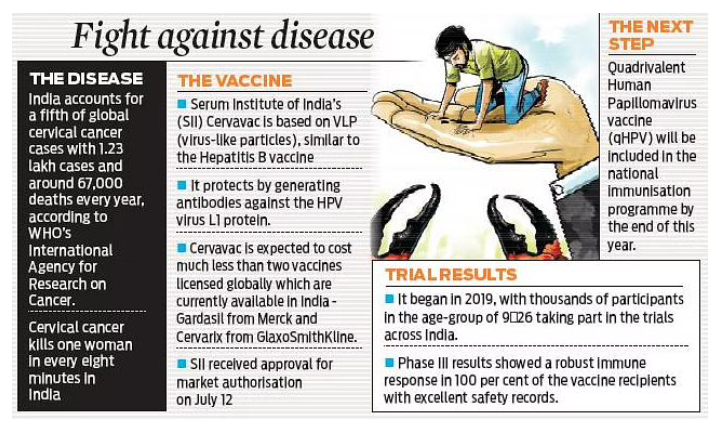
Understanding Cervical Cancer
- Overview
- Cervical cancer is the fourth most common cancer among women globally, primarily linked to high-risk Human Papillomavirus (HPV) infection transmitted through sexual contact.
- Strains and Causes
- Nearly 85% of cervical cancers are linked to persistent infections with specific high-risk HPV strains.
- HPV types 16 and 18, the most oncogenic, contribute to about 70% of global cervical cancer cases.
- Barriers to Early Detection
- Lack of awareness, fear, and absence of early symptoms contribute to advanced-stage detection.
- Challenges include women not seeking screening and resorting to over-the-counter drugs.
- Access to Formal Health Care
- Studies reveal a reliance on traditional healers, hindering timely HPV vaccination.
- Telangana faces challenges in cancer care delivery, anticipating a 28% increase in cases.
- India's Status
- Cervical cancer is the second-most common cancer among Indian women, contributing significantly to the global burden.
Introducing CERVAVAC
- Overview
- CERVAVAC is India’s first quadrivalent human papillomavirus (qHPV) vaccine, effective against four virus strains.
- Significance
- After DGCI approval, the government aims to vaccinate around 50 million girls.
- Administration before the first sexual intercourse is crucial for its effectiveness.
- Global Scenario
- Existing vaccines (Gardasil and Cervarix) in India are costly and not included in the national immunisation program.
Strategies for Cervical Cancer Elimination
- HPV Vaccination
- Persistent high-risk HPV infection is a major cause of cervical cancer.
- Early detection through HPV vaccination, screening, and timely treatment is crucial.
- Early Detection and Treatment
- Cervical cancer has a 10–15 year pre-invasive phase, offering a window for early detection and outpatient treatment.
- Early-stage management yields a cure rate exceeding 93%.
- Elimination Potential
- Cervical cancer is the only non-communicable disease with the potential for elimination.
- WHO sets targets for vaccination, screening, and treatment, aiming for fewer than four cases per 100,000 women.
- Government Initiatives
- The Government of India implements cancer screening, including visual tests and HPV tests, in primary health centres.
- Indigenous kits and vaccines aid resource-scarce settings.
- Role of Technology
- Innovations like single-dose HPV vaccination, self-sampling for HPV testing, and AI technologies enhance cervical cancer prevention.
- Population-Level Awareness
- Increasing awareness, promoting HPV vaccine uptake, and overcoming hesitancy are essential.
- Age-appropriate screening and strengthening pre-cancer treatment processes are crucial.
Strengthening Cervical Cancer Care
- Accurate diagnosis, reduced financial burden, and robust health systems are crucial.
- Digital technologies, collaborations, and partnerships are vital for success.
Conclusion
The alarming statistics highlight the urgent need for preventive measures. Early detection and vaccination present a crucial opportunity, and proposed WHO targets, coupled with government initiatives, provide a roadmap for comprehensive intervention. Sustained efforts, including awareness campaigns and innovative approaches, are essential for the successful elimination of cervical cancer.
|
UPSC Previous Year Questions Prelims (2016) Q. ‘Mission Indradhanush’ launched by the Government of India pertains to (a) Immunization of children and pregnant women Ans: (a) Prelims (2010) Q2. Consider the following statements:
Which of the statements given above is/are correct? (a) 1 only Ans: (b) |
Source: IE
Share the article
Get Latest Updates on Offers, Event dates, and free Mentorship sessions.

Get in touch with our Expert Academic Counsellors 👋
FAQs
UPSC Daily Current Affairs focuses on learning current events on a daily basis. An aspirant needs to study regular and updated information about current events, news, and relevant topics that are important for UPSC aspirants. It covers national and international affairs, government policies, socio-economic issues, science and technology advancements, and more.
UPSC Daily Current Affairs provides aspirants with a concise and comprehensive overview of the latest happenings and developments across various fields. It helps aspirants stay updated with current affairs and provides them with valuable insights and analysis, which are essential for answering questions in the UPSC examinations. It enhances their knowledge, analytical skills, and ability to connect current affairs with the UPSC syllabus.
UPSC Daily Current Affairs covers a wide range of topics, including politics, economics, science and technology, environment, social issues, governance, international relations, and more. It offers news summaries, in-depth analyses, editorials, opinion pieces, and relevant study materials. It also provides practice questions and quizzes to help aspirants test their understanding of current affairs.
Edukemy's UPSC Daily Current Affairs can be accessed through:
- UPSC Daily Current Affairs can be accessed through Current Affairs tab at the top of the Main Page of Edukemy.
- Edukemy Mobile app: The Daily Current Affairs can also be access through Edukemy Mobile App.
- Social media: Follow Edukemy’s official social media accounts or pages that provide UPSC Daily Current Affairs updates, including Facebook, Twitter, or Telegram channels.






